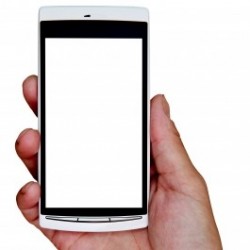
For some time now, rumors regarding the link between our cell phones and the risk of cancer have been abound. With so many articles on the subject, opinion is greatly conflicted. Some say it’s absolutely conclusive while others say it’s inconclusive. So, what are the facts and what can we do about it?
In an international study coordinated by the International Agency for Research (IARC) on cancer carried out in 13 countries, not all conclusions are the same. For example, the Swedish study stated that long-term use of cell phones shows a consistent pattern of risk of certain types of brain cancer. On the other hand, the same study conducted in France stated that there was no significant increased risk for cancer. Furthermore, the same study conducted in Denmark found “no association of cell phone use with brain cancer” but included that the findings are not definitive and more studies are necessary.
In an article entitled “Do Cell Phones Cause Brain Cancer? The Diehards Cling Desperately To Opinion,” Forbes Magazine ridicules the true believers of this phenomenon. The article states, “The International Agency for Research on Cancer (IARC) says that radio frequency energy from cell phones is a ‘possible carcinogen.'” Therefore, the article essentially claims that the IARC study must be inaccurate.
Does this mean there is no significant risk? Or is there? The truth is still uncertain, but articles like the following from Devra Davis, President and Founder of the Environmental Health Trust help clarify the issue. Click here to read the article entitled, “War-Gaming Cell Phone Science Protects Neither Brains Nor Private Parts”.
In conclusion, what can we do about cell phone radiation?
The Environmental Working Group (EWG) recommends 5 easy steps to reduce the amount of radiation you take in from cell phones and electronics.
- Use a headset or speaker.
- Hold phone away from your body.
- Text more, talk less.
- Call when the signal is strong.
- Limit children’s phone use.
- Skip the “radiation shield”.
Apparently different cell phones emit different amounts of radiation, so one way to reduce your exposure is to purchase a cell phone with a lower SAR (specific absorption rate). This is a number that indicates how much radiation is absorbed by the human body when the handset is being used at maximum power. Check with your phone dealer to see what your phone’s SAR rating is. You may also consider that while SAR values are useful, they are bound to increase as cell phones become more powerful and accumulate new features and applications.
Some proponents recommend using a wireless headset like a Bluetooth®. Bluetooth® is the name of a wireless technology that uses pulsed radio frequency signals to power communications. A research scientist by the name of Andrew Goldsworthy, BSc, PhD wrote an article for a conference on Mobile Phone Technology and its Consequences for Public Health. He says that “pulses carried by microwaves are particularly dangerous. This is because their very short wavelength allows the transmission of pulses with extremely rapid rise and fall times, and it is the rate of change of the fields (rather than their total energy) that does most of the biological damage.” To read more from Andrew Goldsworthy, click here. Although Bluetooth®s cut down radiation, when compared to direct exposure from your phone research supports that they may even be worse than your phone.
While there are other gadgets and add-ons one could use to limit cell phone radiation exposure, little success has been found from cell phone chips, diodes and so-called neutralizers. An air tube headset, however, is the safest headset to use. An air tube headset has been scientifically proven to reduce the electromagnetic radiation that reaches your ear and brain area by up to 98%.
As the research progresses and the facts become more clear, we will keep you updated. For now, use these tips for optimal health and minimal exposure.
by Radhia Gleis, PhD, MEd, CCN.
Radhia offers consultations at our Westlake and South locations.
